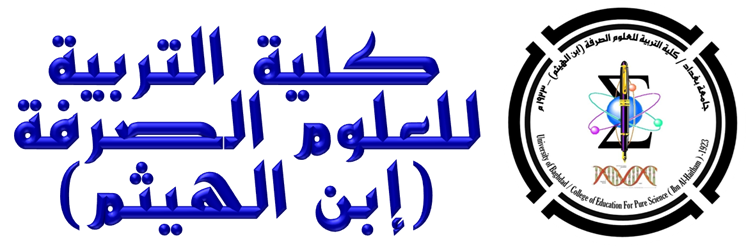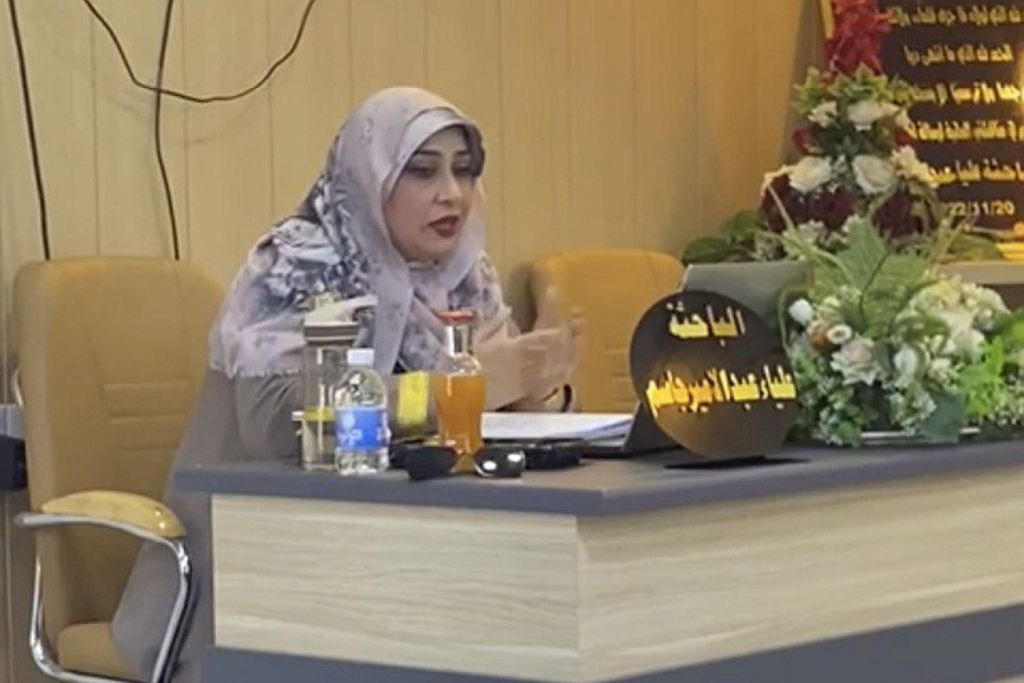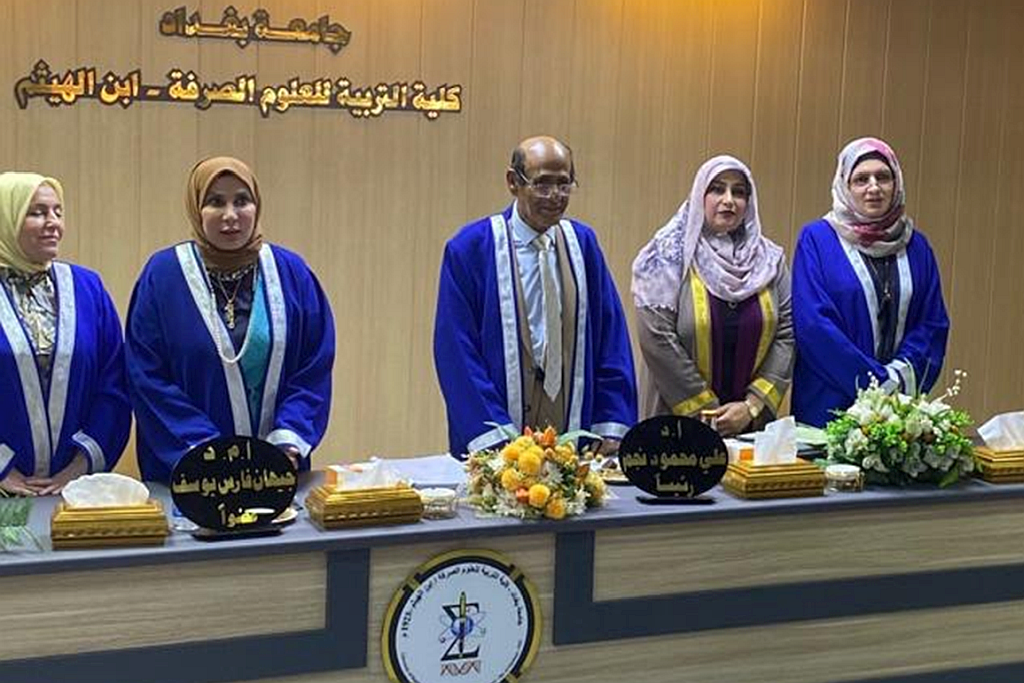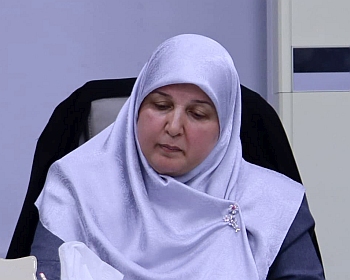ناقش قسم الكيمياء في كلية التربية للعلوم الصرفة (ابن الهيثم) رسالة الماجستير الموسومة ” تفكير الهوية الكيميائية وعلاقته بحل المشكلات العلمية عند طلبة كلية التربية للعلوم الصرفة ” للطالبة ” علياء عبد الأمير جاسم ” التي انجزتها باشراف التدريسية في القسم ” أ.د. بسمة محمد أحمد ” ونوقشت من قبل أعضاء لجنة المناقشة المبينة أسمائهم في ما يأتي :
أ.د. غلي محمود نجم – رئيسا
أ.م.د. سهاد عبد الأمير عبود – عضوا
أ.م.د. جيهان فارس يوسف – عضوا
أ.د. بسمة محمد أحمد – عضوا و مشرفا
ويهدف البحث الى التعرف على تفكير الهوية الكيميائية وعلاقته بحل المشكلات العلمية عند طلبة كلية التربية للعلوم الصرفة ، تم اعتماد منهج البحث الوصفي الارتباطي، وتألفت عينة البحث من (200) طالب وطالبة من طلبة المرحلة الرابعة لقسم الكيمياء الدراسة الصباحية والمسائية من العام الدراسي، بنسبة 63% من مجتمع البحث البالغ عدده(318) طالب وطالبة 2021 / 2022 م ، تم اعداد اداتين للبحث احدهما اختبار تفكير الهوية الكيميائية تألف من أربعة أنماط رئيسة تمثلت بنمط التفكير (المحسوس, والمبدأي, والتركيبي, والتفاعلي) بواقع (20) فقرة ، والأداة الأخرى اختبار حل المشكلات العلمية تألف من ستة مهارات تمثلت ب (تحديد المشكلة ،تمثيل المشكلة، خطة حل المشكلة ، ايضاح خطة حل المشكلة ، الاستنتاج ، والتقويم) وتألف من (25) فقرة من نوع الأختيار من متعدد تم التحقق من صدقهما وثباتهما.
اعتمدت الحقيبة الإحصائية للعلوم الاجتماعية SPSS+22) ) والبرنامج الاحصائي(Amos (4.01 لمعالجة إحصاءات البحث باستخدام معادلات (الصعوبة والتمييز وفعالية البدائل الخاطئة, سبيرمان – براون ,ورولون , والفا كرونباخ, والاختبار التائي لعينيتين مستقلتين, والاختبار التائي لعينة مستقلة واحدة , ومعادلة ارتباط بيرسون ,والتحليل العاملي ,وتحليل التباين الاحادي , أظهرت النتائج الأحصائية :
يوجد تفاوت في أنماط تفكير الهوية الكيميائية اذ حصل نمط التفكير المبدئي على المرتبة الأولى بنسبة (70%) من العينة وجاء نمط التفكير االمحسوس بالمرتبة الثانية بنسبة (20%) من العينة ، اما نمط التفكير التركيبي حصل على المرتبة الثالثة بنسبة (7%) من العينة وجاء نمط التفكير التفاعلي بالمرتبة الرابعة وحصل على نسبة (3%) من العينة
يوجد فرق ذو دلالة احصائية في انماط تفكير الهوية الكيميائية بين طلبة عينة البحث لمصلحة نمط التفكير المبدئي .
يوجد ضعف عند طلبة عينة البحث في اعتماد نمطي تفكير الهوية الكيميائية التركيبي والتفاعلي .
يوجد فرق دال احصائيا بين طلبة عينة البحث على اختبار حل المشكلات العلمية ككل .
ان طلبة عينة البحث لديهم القدرة على تحديد المشكلة, وتمثيل المشكلة , واختيار خطة حل المشكلة , وايضاح خطة حل المشكلة , والأستنتاج عند حل المشكلات الكيميائية بدرجة مقبولة .
يوجد فرق دال احصائيا لمصلحة المتوسط الفرضي والنظري بين طلبة عينة البحث في مجال التحقق والتقويم على اختبار حل المشكلات الكيميائية ويعني ان الطلبة عندهم ضعف في هذا المجال .
العلاقة الارتباطية بين تفكير الهوية الكيميائية وحل المشكلات العلمية ذات دلالة احصائية وهي علاقة طردية موجبة.
أوصت الباحثة بضرورة اهتمام قسم الكيمياء بتطوير فهم الطلبة بتفكير الهوية الكيميائية وانماطها وذلك بطرح مشكلات الكيمياء من الحياة واجراء الربط بين فروع الكيمياء عند تدريس مفاهيمها مع اعتماد أعضاء هيئة التدريس مواقف تعليمية بشكل مشكلات في الكيمياء يقوم الطالب بحلها
بحسب ما توصلت اليه نتائج البحث واستنتاجاته , يمكن تقديم التوصيات الآتية :
-
ضرورة اهتمام قسم الكيمياء بتطوير فهم الطلبة بتفكير الهوية الكيميائية وانماطها وذلك بطرح مشكلات الكيمياء في الحياة واجراء الربط بين فروع الكيمياء عند تدريس مفاهيمها .
-
توجيه اعضاء هيئة التدريس في اقسام الكيمياء بدمج أنماط تفكير الهوية الكيميائية في محتوى مقررات مواد الكيمياء على الجانبين النظري والعملي .
-
تنظيم دورات وندوات لأعضاء هيئة التدريس في كليات التربية تطلعهم على مقاصد تفكير الهوية الكيميائية وطريقة تحقيقه .
-
الاستفادة من اختبار تفكير الهوية الكيميائية كأداة للكشف عنه عند طلبة الجامعة.
-
توجيه أعضاء هيئة التدريس الأهتمام بنمطي التفكير الكيميائي التركيبي والتفاعلي وذلك بتوافر جميع المواد الكيميائية والأجهزة اللازمة ليتسنى للطالب اجراء جميع التفاعلات الضرورية لتصنيف و تمييز المواد الكيميائية والكشف عن هوية المواد الكيميائية باستخدام حل المشكلات العلمية .
-
اعتماد أعضاء هيئة التدريس مواقف تعليمية بشكل مشكلات في الكيمياء يقوم الطالب بحلها تتضمن مجالات ( تحديد المشكلة , وتمثيلها , ووضع خطة حلها, ايضاح خطة حل المشكلة, واستنباط النتائج وتعليلها ).
-
الأهتمام بمهارة التقويم عند حل المشكلات الكيميائية وذلك بتوجيه الطلبة الى التحقق من صحة النتائج التي تم التوصل اليها سواء كانت على الجانب النظري عند طرح مواقف تمثل مشكلة كيميائية ام الجانب العملي عند اجراء التجارب المختبرية فضلا من التأكد من نجاعة الأساليب المتبعة في حل هذه المشكلات .
-
الاستفادة من اختبار حل المشكلات العلمية كأداة للكشف عن مقدار اكتساب طلبة الجامعة لهذه المجالات في تخصص الكيمياء.












